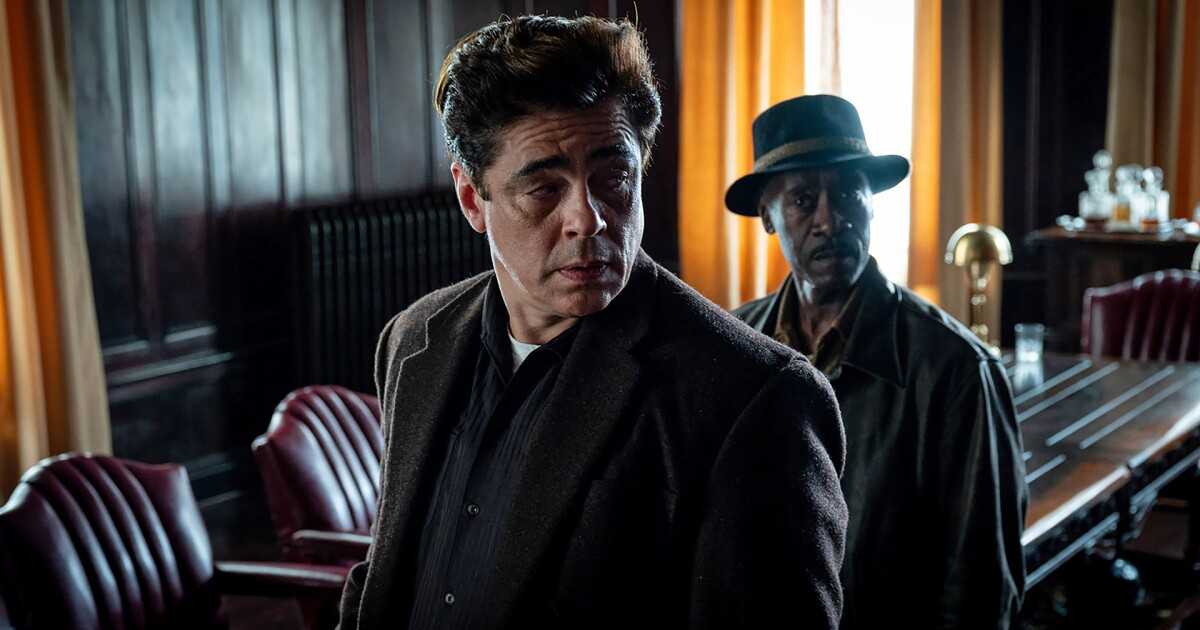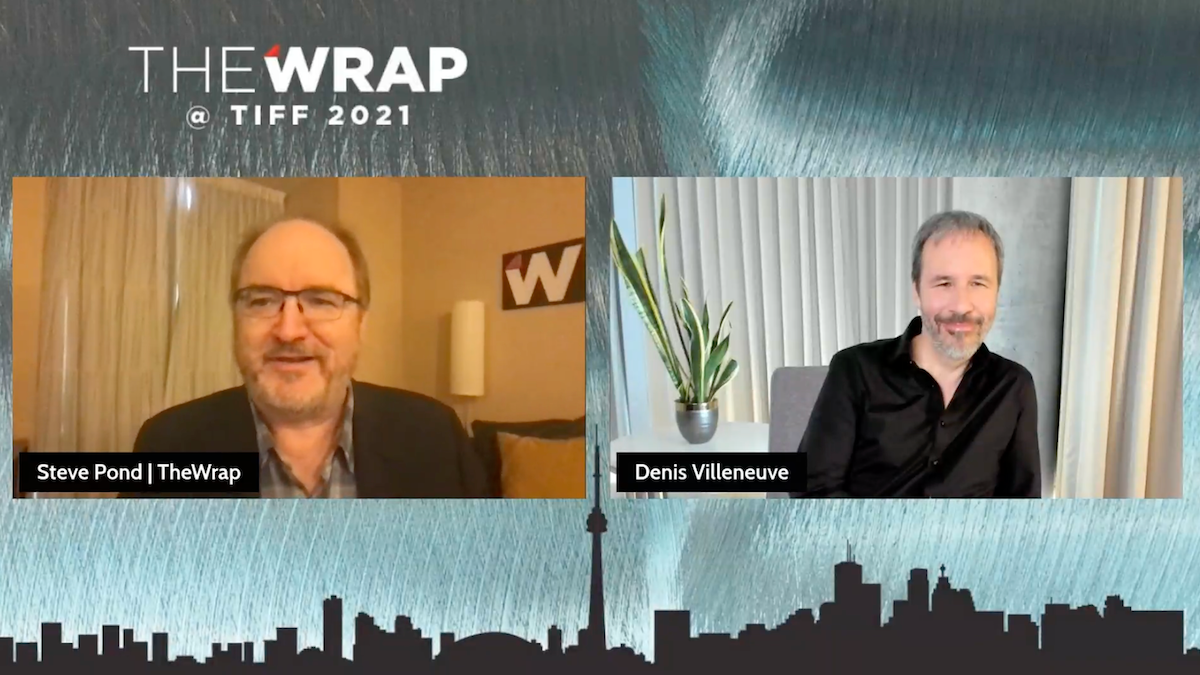‘No Sudden Move’ ending defined: What is actually real in HBO thriller
5 min read
Warning: The subsequent post incorporates plot aspects from the entirety of the HBO Max movie “No Unexpected Move.” If you have not noticed the film yet, we advise looking through this critique or this story on how the film arrived with each other alternatively. Then arrive back just after you’ve witnessed the motion picture.
For a movie termed “No Unexpected Transfer,” Steven Soderbergh’s new noir thriller does a total good deal of abrupt zigging and zagging.
Trying to keep observe of all the double- and triple-crosses between the big solid of characters in the labyrinthine heist film, now streaming on HBO Max, calls for close awareness.
Even then you nonetheless may locate you acquiring a tiny shed at occasions in the at any time-growing internet of deceit and corruption in which the film’s pair of petty criminals, Curtis Goynes (Don Cheadle) and Ronald Russo (Benicio del Toro), locate on their own.
If you do, really do not come to feel undesirable. Soderbergh and screenwriter Ed Solomon planned it that way from the start off.
“In our initially assembly, Steven claimed, ‘Let’s do a film in which you from time to time really do not locate out anything about a character until way later, where you don’t understand backstory until you need to have to,’” claims Solomon. “As an viewers member, I like acquiring to lean in, to fill in the gaps. I believe there’s extra poetry that way.”
Right after being introduced with each other with a further petty crook (Kieran Culkin) to steal a document from the business office of a very low-degree automobile-market govt, Goynes and Russo go on a twisty journey by means of racially polarized 1954 Detroit to obtain out who hired them for the position and why, navigating a perilous path between rival gangs and entrenched corporate pursuits.
For significantly of the movie, neither they nor the audience even know what the doc is — a acquainted trope of the noir genre, which usually employs this kind of MacGuffin as a springboard for the motion.
In the film’s final act, the complete dimensions of the plan eventually occur into aim, and what appeared at first to be the tale of a slight heist absent improper is revealed to be a sprawling tale of electricity, systemic racism and company greed.
The doc Goynes and Russo have pilfered has ideas for a catalytic converter, an innovation that will allow vehicles to emit a lot less air pollution. The major automakers — led by a shadowy Mr. Significant performed, in an unbilled cameo, by Matt Damon — orchestrated the theft of the blueprints to check out to keep them from slipping into the incorrect hands.
Prior to the stop credits, textual content rolls on the display screen detailing that decades afterwards the federal government sued the major auto suppliers for conspiring to conceal proof of air pollution from vehicles and deliberately keeping again catalytic converter engineering.
If that is genuine, you may question, did all the things we just saw seriously come about?
Well, no. The Justice Division did indeed appear down on the Big Four automobile makers for conspiring from 1953 to 1969 to delay the production and installation of products to handle air pollution in their cars. But the relaxation is fiction.
“There are some distant parallels to actual people, and the references to items like the Purple Gang and different other things of Detroit are real,” suggests Solomon, who did extensive analysis and consulted with professionals on that interval of the Motor City’s record. “But Don and Benicio’s people are totally fictional. It’s not based on a legitimate tale but the backdrop includes authentic situations.”
Another all-also-true component of that backdrop consists of the destruction in that time interval of Detroit’s the moment-flourishing Black middle-class neighborhoods of Black Bottom and Paradise Valley, which is referenced in the film and lends Cheadle’s character an included moral pounds.
“That total place of city, Black Bottom and Paradise Valley, they just wrecked it,” Soderbergh states. “They just ran these multilane freeways appropriate via. The just before-and-after shots are deeply enraging.”
Taking pictures in Detroit, the scars from that dim chapter in the city’s racial record had been inescapable, says Cheadle.
“I remember when we obtained to Detroit, leaving the principal road and dipping off into a community and viewing a pack of pet dogs just in the center of the road,” he suggests. “These properties the place there experienced been multigenerational households that ended up prospering — that was just absent. In some of the locations wherever we shot, each and every fourth household would have a person in it and the rest was just devastation and blight.”
As the fictionalized embodiment of company-fatcat avarice, Damon provides some of the film’s juiciest strains, coldly boasting of his ability for generating ever-greater wealth: “It’s like a lizard’s tail. I operate, it grows. I sleep, it grows.”
Solomon realized he essential to nail Damon’s huge monologue if the movie was heading to have the thematic heft he and Soderbergh wished.
“I didn’t know who the actor would be but I knew it would be a great actor who’d be coming in for a few times,” he claims. “The bar Steven set was a fairly superior just one. It was not a modest activity to believe about and then write a scene worthy of an actor like that.”
As for the last fates of Goynes and Russo, there much too things do not turn out as one particular may possibly most likely have predicted.
Russo is betrayed and killed by the femme fatale of a mob wife (played by Julia Fox) with whom he’s been acquiring an affair. Goynes loses out on the massive rating he was hoping for but is presented a reprieve by Bill Duke’s gang leader Aldrick Watkins so he can leave Detroit for a new life in Kansas Metropolis.
There is no content ending for these two tiny-time crooks, no resolution in which they come to be buddies and beat the procedure. In the end, as in the starting, they are crammed with distrust of each and every other and all people all over them, distrust that is plainly justified in the murky noir environment that Soderbergh and Solomon have made.
“No Unexpected Move” is, immediately after all, a noir film. As its tag line states, “Trust is a setup.”
“We didn’t want to slide for that trope that possibly of them learns some thing excellent,” Soderbergh claims. “There was no universe in which I was likely have a scene where any individual expresses some form of evolution or enlightenment. The knowledge that they appear to is that they require every single other. But which is distinct. Need has practically nothing to do with want or or want. Require is a primal, naked factor.”
window.fbAsyncInit = perform() FB.init(
appId : '134435029966155',
xfbml : legitimate, model : 'v2.9' )
(functionality(d, s, id) var js, fjs = d.getElementsByTagName(s)[0] if (d.getElementById(id)) return js = d.createElement(s) js.id = id js.src = "https://link.facebook.web/en_US/sdk.js" fjs.parentNode.insertBefore(js, fjs) (doc, 'script', 'facebook-jssdk'))






